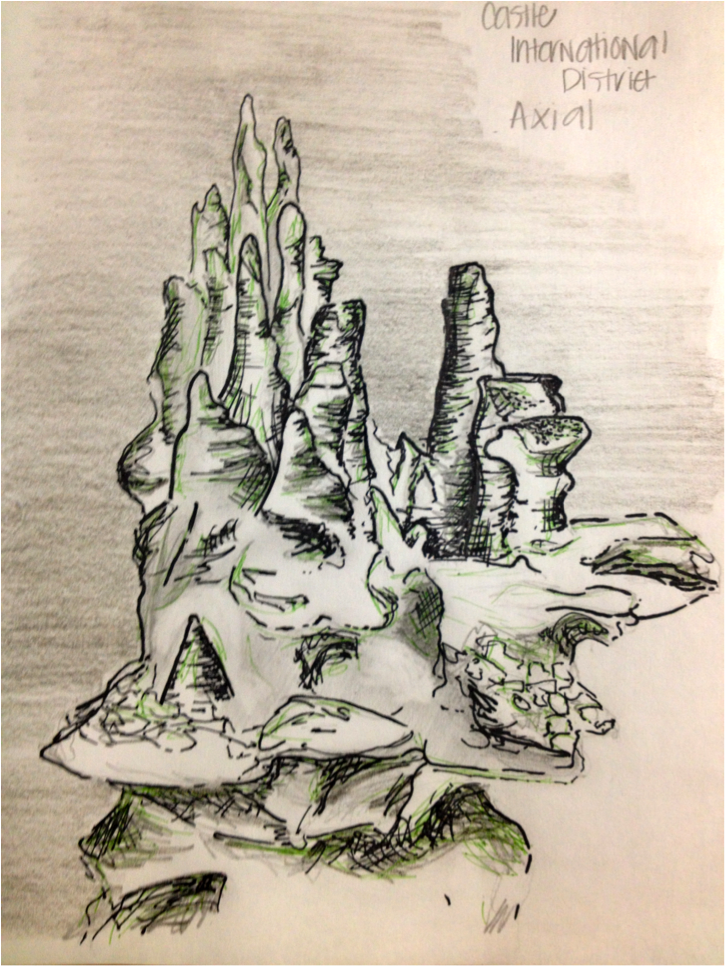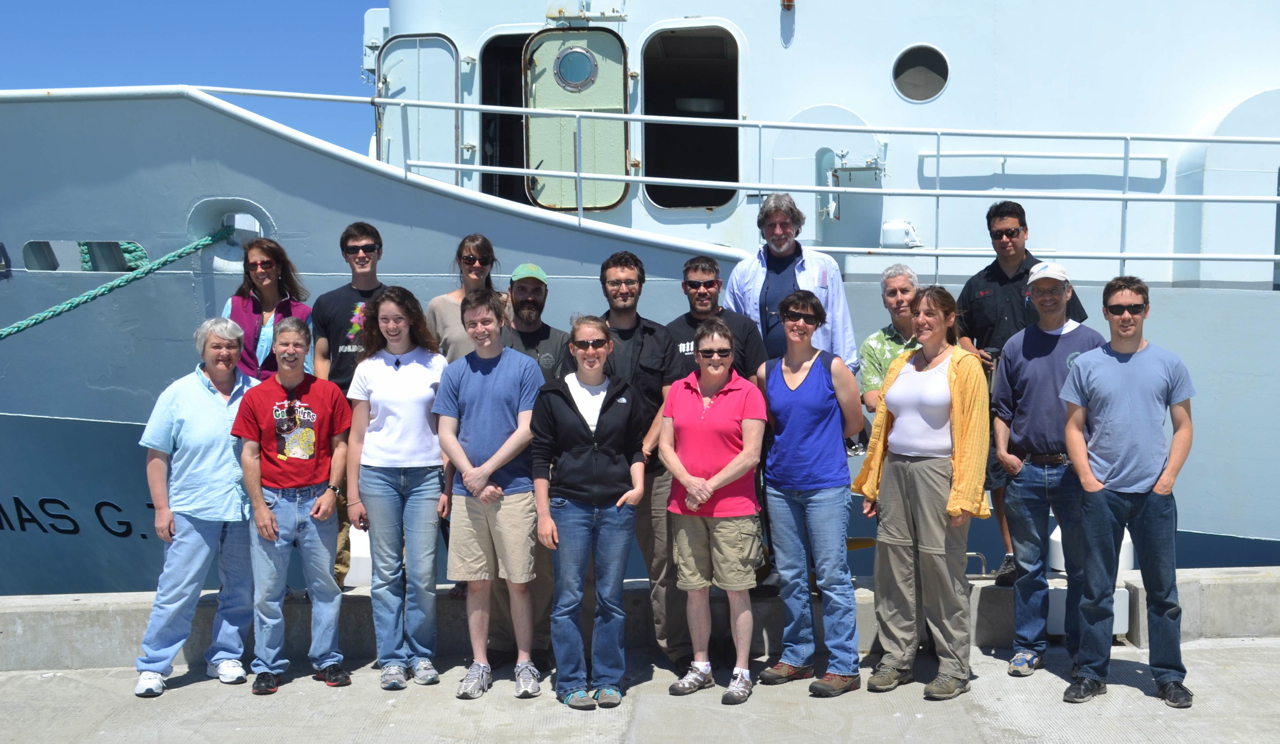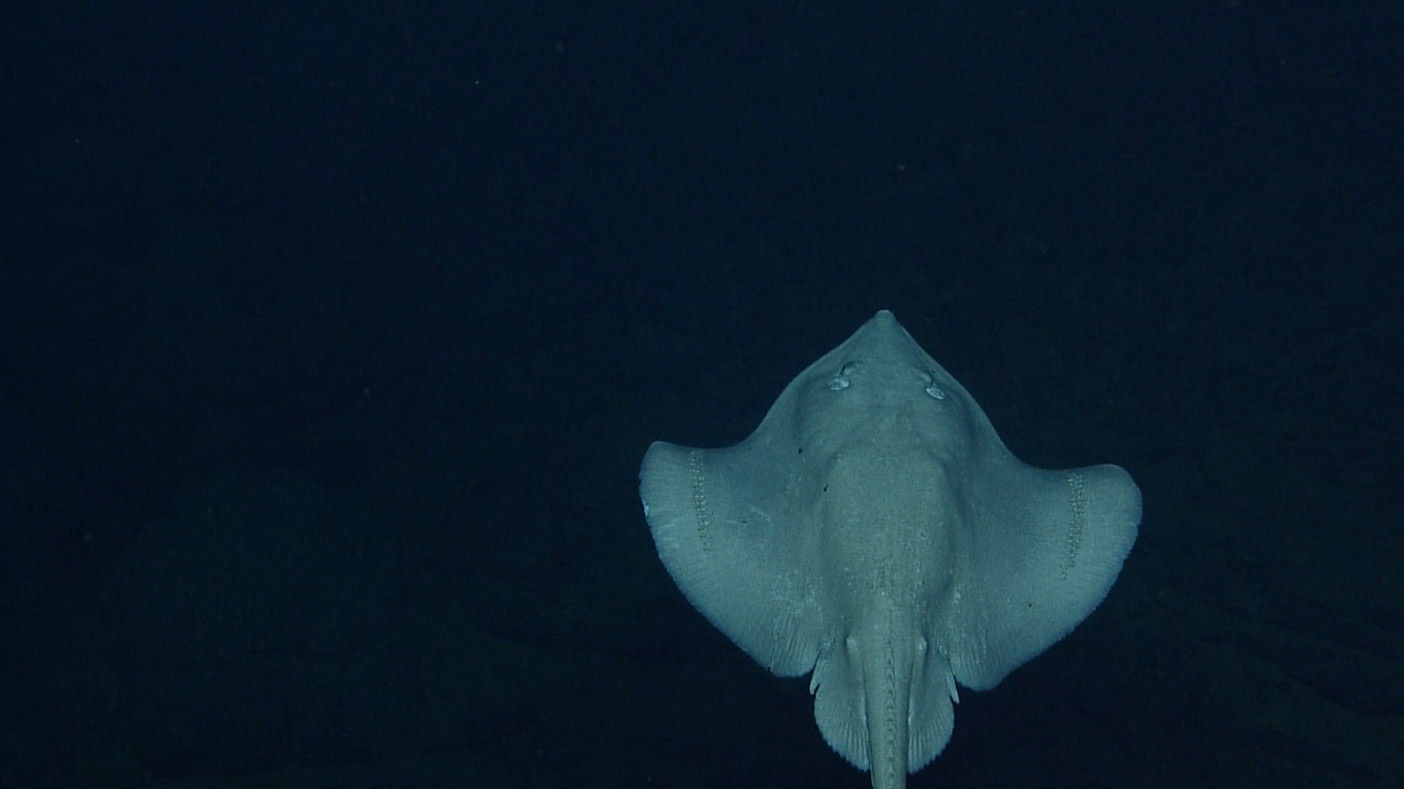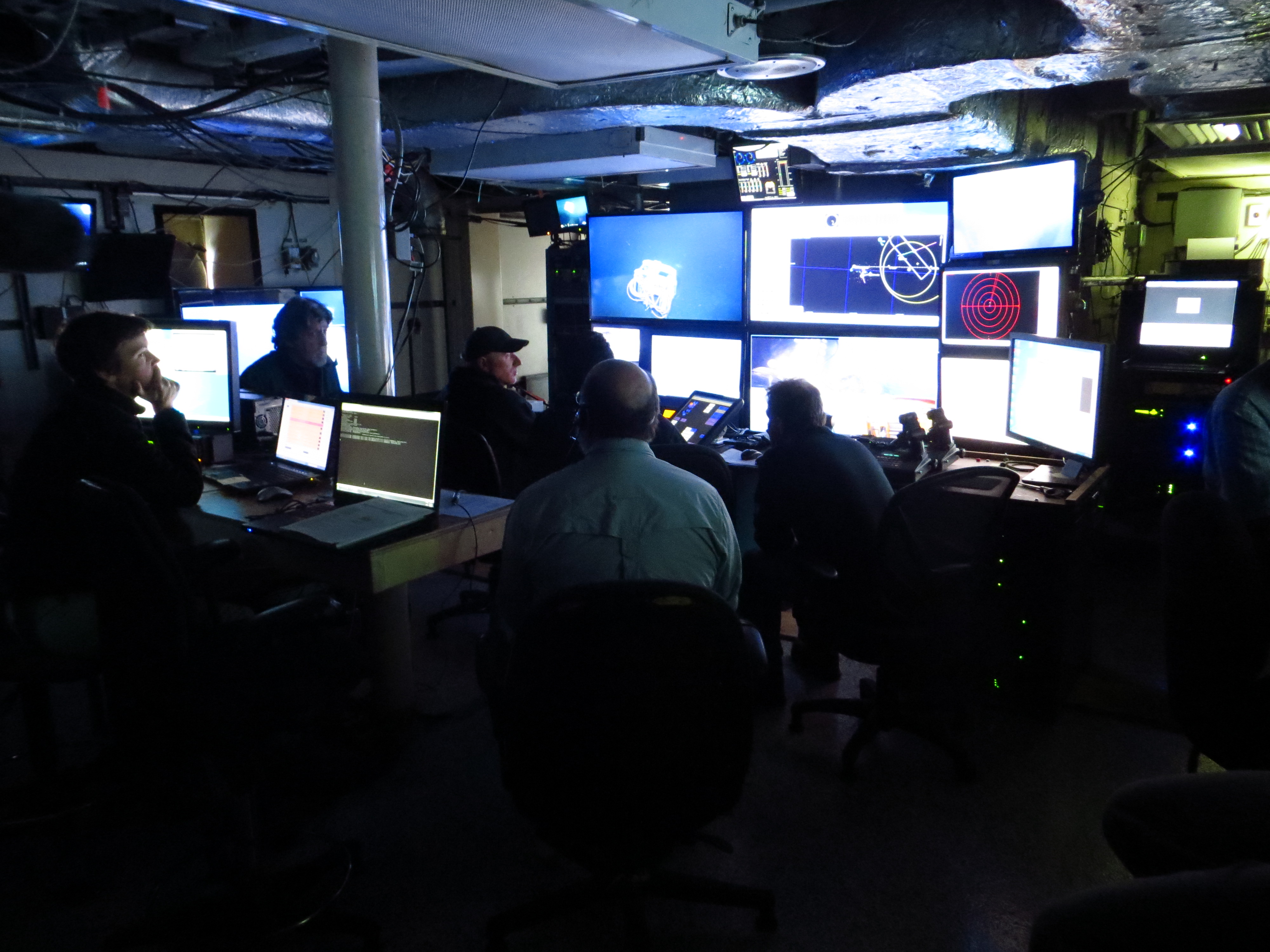Image Archive





























Mary Miller

r1605highlights

This orange, secondary cable was laid about one week ago by ROPOS. The image, taken during the cable inspection portion of Dive 1608, shows the cable on top of pillow basalts on the seafloor at Axial Volcano. Photo credit: OOI-NSF/UW/CSSF

The bottom pressure and tilt instrument (BOPT), designed by Bill Chadwick of Oregon State University, being deployed onto the seafloor at Axial Seamount by ROPOS as part of the VISIONS'13 expedition. Credit: UW/OOI-NSF/CSSF; V13.

This octopus, nicknamed the Flapjack Octopus, on pillow basalts at the summit of Axial's Eastern caldera. Credit: UW/OOI-NSF/CSSF, ROPOS Dive R1608, V13.

One of ROPOS’ “claws” that can be manipulated from the ship to do many tasks on the infrastructure deployed to the seafloor. Photo by Montgomery Taylor

The College of Charleston group. From left; Alumni J. Ryan Rembert, Marine Geology Professor as well as my advisor Dr. Leslie Sautter, and me, looking extremely photogenic.

The bow of the Thompson, with the bridge in the background Photo by Montgomery Taylor

Sunset at NOAA Dock in Newport, Oregon from the Thompson Photo by Montgomery Taylor

Moon over Newport upon our departure Photo by Montgomery Taylor

Adios, Newport! Photo by Montgomery Taylor

Fiber Optic Cable we are using to connect all of the pieces of our Regional Scale Nodes puzzle Photo by Montgomery Taylor

During our nightly meeting in the ship's library Photo by Montgomery Taylor

Sketch of “Castle” Hydrothermal Vent (International District, Axial Seamount) Sketch and photo by Montgomery Taylor

Leaving Newport on Leg 3 Photo by Nancy Penrose

VISIONS '13 Leg 2 Team

ROPOS enters the Pacific with a medium powered junction box attached to its underbelly. Photo by Marisa Gedney

Clean Safe Science Photo by Marisa Gedney

Thompson Gedneyblog Photo by Marisa Gedney

Beautiful soft corals inhabit the hard carbonate substrate of the 60 m tall Pinnacle structure west of the major seep sites at Southern Hydrate Ridge. This site, at a water depth of ~ 550 m, hosts numerous white and orange bacterial mats, marking sites of weak venting of methane-rich fluids. The almost pummice-like structure of the pinnacle provides ample places for animals to live - small shrimp are extremely abundant. The Pinnacle is likely the fossilized 'throa'/plumbing system for a more ancient seep site that once inhabited this area.

A skate slowly swims past the ROV ROPOS; Credit: UW/NSF-OOI/CSSF; ROPOS Dive R1604, V13.

First day on the VISIONS'13 Expedition, leaving the Ballard locks on the R/V Thompson.

Julie Nelson collects water from the CTD water cast after it arrives back on deck. Photo by Judy Twedt

Claire looks on as Owen and Danny use a buckets to scoop up salps from the ship. Photo by Judy Twedt

ROV dive logger, Judy Twedt, sits behind the ROPOS pilots, scientists, and engineers and archives the events of the dive. VISIONS '13, Leg 2 Photo by Mitchell Elend

Hagfish, corals, lobster at Southern Hydrate Ridge.Credit: UW/OOI-NSF/CSSF.

ROPOS begins its descent into the deep, observed by a local albatross at Axial Seamount. Photo credit: Mitchell Elend

The R/V Melville cast off on July 15, 2013, from the UW dock, headed for Station Papa to deploy OOI infrastructure. Photo by Mike Mulvihill.
- Anemone
- Animal
- Arthropod
- ASHES
- Axial
- Axial Base
- Axial Biology
- Axial Caldera
- Bacteria
- Basalt Lava
- BEP
- Biofouling
- biolgoy
- Biology
- Camds
- Camera
- Camhd
- Central Caldera
- Ciliates
- Cnidaria
- Coastal Biology
- Crab
- Deep Profiler Mooring
- Dive Highlights
- Eastern Caldera
- Echinoderms
- Endurance Array
- Engineering Team
- ENLIGHTEN 10
- Exploratorium
- Fish
- Geology
- HD Camera
- HPIES
- Hydrate Ridge
- Hydrates
- Hydrophone
- Hydrothermal Vents
- Illustration
- Inshore 80 Meters
- Instrument
- International District
- J-BOX
- Jason
- Jellyfish
- Junction Box
- K12
- Lava
- Mollusk
- Moorings
- Nodes
- Nudibranch
- Octopus
- OOI
- Oregon Offshore
- Oregon Offshore 600 m
- Oregon Shelf
- Oregon Slope Base
- People
- PN1B
- PN1D
- Polychaetes
- PPSDN
- Primary Node
- RASFL
- ROCLS
- ROPOS
- ROPOS Dives
- ROV Team
- RV Revelle
- RV Sikuliaq
- RV Thompson
- Salp
- Sample
- SC13
- Science Team
- Sea Cucumber
- Sea Star
- Sea Urchin
- Seafloor
- Seismometer
- Sensors
- Shallow Profiler Mooring
- Shark
- Shipboard
- Shore Station
- Slope Base
- Smoker
- Soft Coral
- Southern Hydrate Ridge
- Sponge
- Squid
- Students
- Students & Guest Participants
- Tmpsf
- Tubeworms
- VISIONS 11 Leg 1
- VISIONS 11 Leg 2
- VISIONS 11 Viewers
- VISIONS 13
- VISIONS 14
- VISIONS 15
- VISIONS 16
- VISIONS 17
- VISIONS 18
- VISIONS 20
- VISIONS 22
- VISIONS 23
- Visualization
